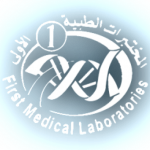/Neuronal intestinal dysplasia (NID), described in 1971, is a poorly understood colonic motility disorder of neuronal structure in the bowel wall. NID is characterized by several histochemical and pathological findings such as
-1
Hyperplasia of submucous and myenteric plexus with formation of giant ganglia
-2
Isolated ganglion cells in the mucosal lamina propia and between muscle layers of muscularis mucosa
-3
Moderate elevation of acetylcholinesterase in the parasympathetic fibers of mucosal lamina propia and circular muscle
-4
Hypoplastic or aplastic myenteric plexus sympathetic innervation
The most characteristic alteration identified is acetylcholinesterase elevation of parasympathetic fibers, and the less reliable diagnostic feature, the giant ganglion cells. This disease entity has be divided into two types ( A and B), with a common clinical feature in both: chronic constipation and megacolon . In type A the disease is confined to the colon causing a functional bowel obstruction with acute onset. Symptoms are present since birth and comprise: constipation, ulcerative colitis, painful straining, and bloody stools. Histologically there is aplasia or hypoplasia of myenteric sympathetic innervation and increase acetylcholinesterase activity in lamina propria, circular muscle and muscularis mucosa . Ganglion cells are present, excluding the diagnosis of Hirschsprung’s disease HD
Type B NID is more common. It is often associated with Hirschsprung’s disease and can constitute a cause of failure of clinical improvement after adequate resectional pull-through surgery. Other conditions associated with Type B NID are: Chronic intestinal pseudo-obstruction, anorectal malformations and MEN II syndrome patients. Histology is characterized by dysplastic parasympathetic submucous plexus with giant ganglion cells and hyperplasia, elevated acetylcholinesterase levels, and isolated ganglia in lamina propria . While an aggressive attitude given to patient with type A, a more conservative attitude is given to patient with Type B as most patients improve with age
In summary, NID is a motility disease affecting neonates and infants and requires special skills and stains for definite diagnosis
Note: Please submit the specimen in Saline and call us for arrangement to do Acetylcholinestearase staining
Please do not hesitate to contact us for further inquiries
We, in the First Medical Laboratory, are dedicated to bring the best of laboratory medicine to clinical practice to Jordan
Dr. Hussam Abu-Farsakh
American Board of Anatomic & Clinical Pathology, and Cytopathology
Circular: is a periodic circular that distributed to clinician informing them about new and important tests available at First Medical Laboratory. All information listed are supported by recent literature
